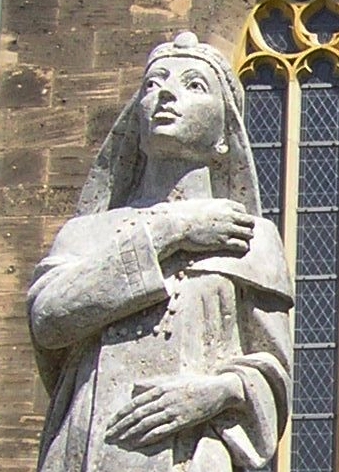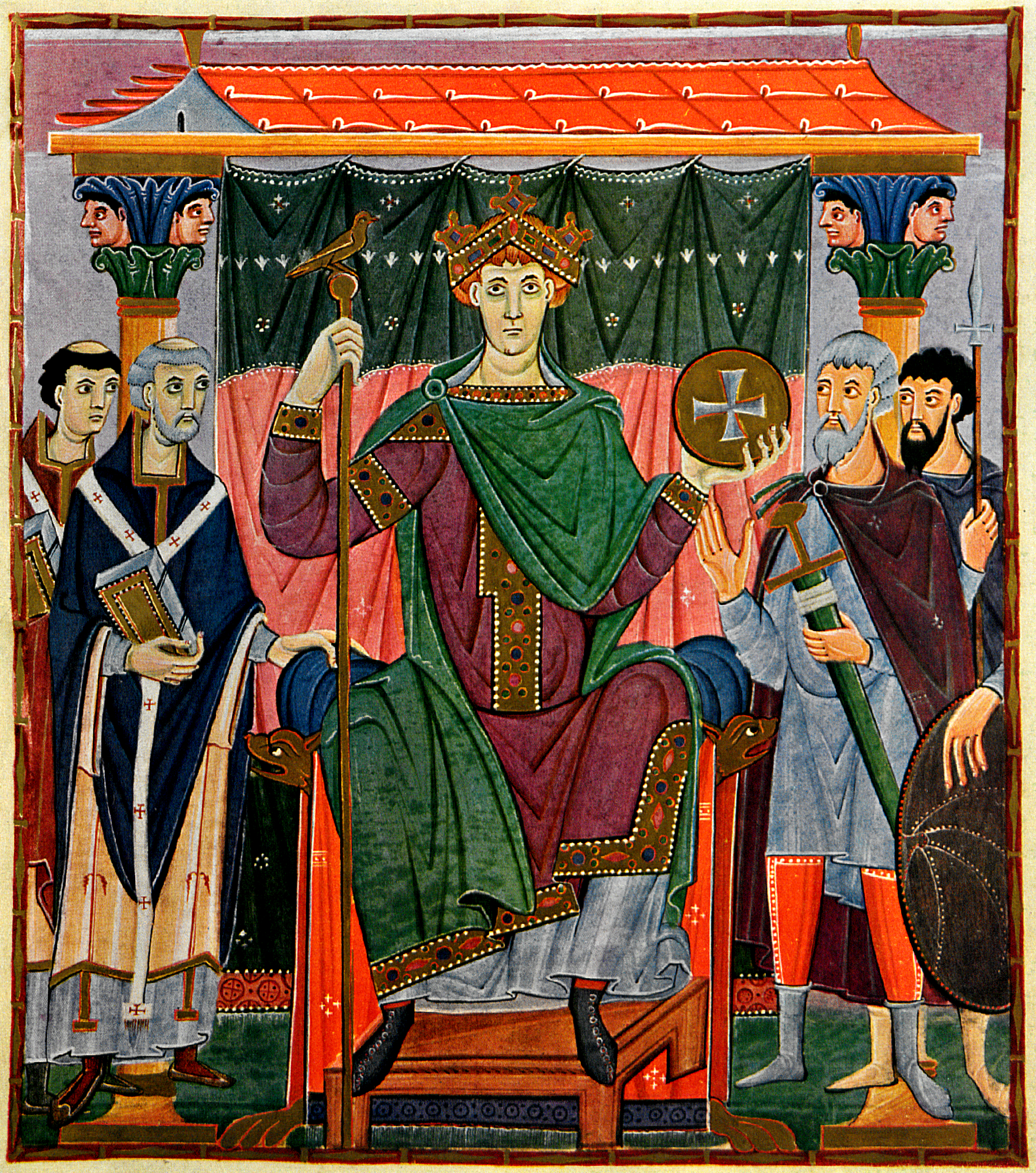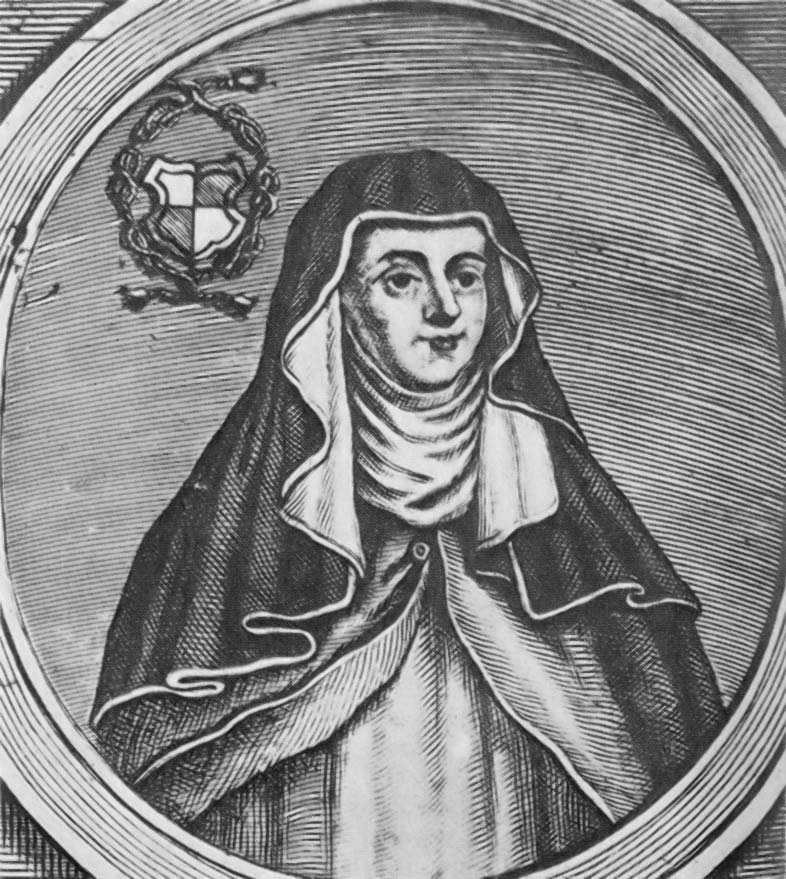|
Adelaide I, Abbess Of Quedlinburg
Adelaide I (german: Adelheid; 973/74 – 14 January 1044 or 1045), a member of the royal Ottonian dynasty was the second Princess-abbess of Quedlinburg from 999, and Abbess of Gernrode from 1014, and Abbess of Gandersheim from 1039 until her death, as well as a highly influential kingmaker of medieval Germany. Early life Named after her paternal grandmother, Queen Adelaide of Italy, Abbess Adelaide was the eldest daughter of Emperor Otto II and his consort Theophanu. She was educated in Quedlinburg Abbey by her paternal aunt, Abbess Matilda. While Matilda and Theophanu stayed at the Italian court of Pavia in 984, the young girl was abducted by the forces of her quarrelling uncle Duke Henry II of Bavaria in 984 and held in custody by his henchman, the Billung count Egbert the One-Eyed. Soon after, however, she was released by loyal Saxon troops. In October 995 Adelaide became a canoness in Quedlinburg. When Abbess Matilda died on 7 February 999, she was elected her success ... [...More Info...] [...Related Items...] OR: [Wikipedia] [Google] [Baidu] |
List Of Princess-abbesses Of Quedlinburg
This is a list of princess-abbesses of Quedlinburg Abbey. {{DEFAULTSORT:Quedlinburg, Princess-abbesses Lists of monarchs Lists of female office-holders Lists of clerics Lists of European people ... [...More Info...] [...Related Items...] OR: [Wikipedia] [Google] [Baidu] |
Henry II, Duke Of Bavaria
Henry II (951 – 28 August 995), called the Wrangler or the Quarrelsome (german: Heinrich der Zänker), a member of the German royal Ottonian dynasty, was Duke of Bavaria from 955 to 976 and again from 985 to 995, as well as Duke of Carinthia from 989 to 995. Life He was the son of Duke Henry I of Bavaria, younger brother of King Otto I of Germany (Emperor from 962), and his wife Judith. Henry succeeded his father at the age of four, under the guardianship of his mother. His sister Hadwig was married to Duke Burchard III of Swabia in 954. In 972 Henry married Princess Gisela of Burgundy, herself a niece of Empress Adelaide. Upon Emperor Otto's death in 973, Henry could rely on his ties to the South German duchies of Swabia and Bavaria as well as to the adjacent Kingdom of Burgundy. He installed his cousin Henry as Bishop of Augsburg, denying the investiture rights of Emperor Otto's son and successor Otto II. When his brother-in-law Duke Burchard III died without heirs, ... [...More Info...] [...Related Items...] OR: [Wikipedia] [Google] [Baidu] |
Frose
Frose is a village and a former municipality in the district of Salzlandkreis, in Saxony-Anhalt, Germany. Since 15 July 2009, it is part of the town Seeland. Statistisches Bundesamt
The Federal Statistical Office (german: Statistisches Bundesamt, shortened ''Destatis'') is a federal authority of Germany. It reports to the Federal Ministry of the Interior.
The Office is responsible for collecting, processing, presenting and ...
References External links ...
|
King Of The Romans
King of the Romans ( la, Rex Romanorum; german: König der Römer) was the title used by the king of Germany following his election by the princes from the reign of Henry II (1002–1024) onward. The title originally referred to any German king between his election until his being crowned Emperor by the Pope. The title was also used to designate the successor to the throne elected during the lifetime of a sitting Emperor. From the 16th century onwards, as German kings adopted the title of Emperor-elect and ceased to be crowned by the Pope, the title continued to be used solely for a elected successor to the throne during his predecessor's lifetime. The actual title varied over time. During the Ottonian period, it was King of the Franks (German: ''König der Franken'', Latin: ''Rex Francorum''), from the late Salian period it was King of the Romans (German: ''König der Römer'', Lat.: ''Rex Romanorum''). In the Modern Period, the title King in Germania (German: ''König in G ... [...More Info...] [...Related Items...] OR: [Wikipedia] [Google] [Baidu] |
Henry II, Holy Roman Emperor
Henry II (german: Heinrich II; it, Enrico II; 6 May 973 – 13 July 1024), also known as Saint Henry the Exuberant, Obl. S. B., was Holy Roman Emperor ("Romanorum Imperator") from 1014. He died without an heir in 1024, and was the last ruler of the Ottonian line. As Duke of Bavaria, appointed in 995, Henry became King of the Romans ("Rex Romanorum") following the sudden death of his second cousin, Emperor Otto III in 1002, was made King of Italy ("Rex Italiae") in 1004, and crowned emperor by Pope Benedict VIII in 1014. The son of Henry II, Duke of Bavaria, and his wife Gisela of Burgundy, Emperor Henry II was a great-grandson of German king Henry the Fowler and a member of the Bavarian branch of the Ottonian dynasty. Since his father had rebelled against two previous emperors, the younger Henry spent long periods of time in exile, where he turned to Christianity at an early age, first finding refuge with the Bishop of Freising and later during his education at the cat ... [...More Info...] [...Related Items...] OR: [Wikipedia] [Google] [Baidu] |
Eckard I, Margrave Of Meissen
Eckard I (''Ekkehard'';Rarely ''Ekkard'' or ''Eckhard''. Contemporary Latin variants to his name include ''Ekkihardus'', ''Eggihardus'', ''Eggihartus'', ''Heckihardus'', ''Egihhartus'', and ''Ekgihardus''. – 30 April 1002) was Margrave of Meissen from 985 until his death. He was the first margrave of the ''Ekkehardinger'' family that ruled over Meissen until the extinction of the line in 1046. Life Eckard was of noble east Thuringian stock, the eldest son of Margrave Gunther of Merseburg (d. 982). He followed his father into exile from 976 to 979 and took part in the 982 Battle of Stilo against the Emirate of Sicily, where Gunther was killed. Back in Germany, Eckard upon the death of Emperor Otto II in 983 supported his minor son King Otto III of Germany. At the '' Hoftag'' diet of Rohr in June 984, he together with Archbishop Willigis of Mainz and several German princes enforced the release of the four-year-old king by his rivaling cousin Duke Henry II of Bavaria. In 985 O ... [...More Info...] [...Related Items...] OR: [Wikipedia] [Google] [Baidu] |
Sophia I, Abbess Of Gandersheim
Sophia I (September 975 – 30 January 1039), a member of the royal Ottonian dynasty, was Abbess of Gandersheim from 1002, and from 1011 also Abbess of Essen. The daughter of Emperor Otto II and his consort Theophanu, she was an important kingmaker in medieval Germany. Early life According to the chronicles by Thietmar of Merseburg, Sophia was born to Emperor Otto II and Theophanu. She may have been the first surviving daughter, born in 975, though other sources indicate that her sister Adelaide, born 977, was in fact the eldest. Sophia is first documented in a 979 deed of donation, when her father entrusted her education to his first cousin, Abbess Gerberga II of Gandersheim. Sophia was raised and educated in Gandersheim Abbey to become abbess from childhood. Sophia being placed to take over Gandersheim abbey is significant as the abbey held a place of importance to the Ottonian dynasty. The abbey was founded by Duke Liudolf of Saxony, the oldest member of the Ottonian lineag ... [...More Info...] [...Related Items...] OR: [Wikipedia] [Google] [Baidu] |
Otto III, Holy Roman Emperor
Otto III (June/July 980 – 23 January 1002) was Holy Roman Emperor from 996 until his death in 1002. A member of the Ottonian dynasty, Otto III was the only son of the Emperor Otto II and his wife Theophanu. Otto III was crowned as King of Germany in 983 at the age of three, shortly after his father's death in Southern Italy while campaigning against the Byzantine Empire and the Emirate of Sicily. Though the nominal ruler of Germany, Otto III's minor status ensured his various regents held power over the Empire. His cousin Henry II, Duke of Bavaria, initially claimed regency over the young king and attempted to seize the throne for himself in 984. When his rebellion failed to gain the support of Germany's aristocracy, Henry II was forced to abandon his claims to the throne and to allow Otto III's mother Theophanu to serve as regent until her death in 991. Otto III was then still a child, so his grandmother, Adelaide of Italy, served as regent until 994. In 996, Otto III ma ... [...More Info...] [...Related Items...] OR: [Wikipedia] [Google] [Baidu] |
German Royal Election, 1002
The German royal election of 1002 was the decision on the succession which was held after the death of Emperor Otto III without heirs. It was won by Duke Henry IV of Bavaria among accusations of uncustomary practices (bribery and electoral manipulation). Background On 23/24 January 1002, the 21-year-old Emperor Otto III unexpectedly died of malaria at the Castel Paterno in Italy, without heirs or a will. As the last male line descendant of Emperor Otto I, the older line of the Liudolfings came to an end with him. The election of a new king now no longer was a formality controlled by the incumbent king, but became a central political question. Candidates The chief candidates to succeed Otto were the Dukes of the Empire, but Eckard I of Meissen also actively competed though he was only a Margrave. According to Thietmar of Merseburg he is meant to have been promoted to the duchy of Thuringia by the Thuringians in a popular election and he had been particularly valued by the ... [...More Info...] [...Related Items...] OR: [Wikipedia] [Google] [Baidu] |
Bishopric Of Halberstadt
The Diocese of Halberstadt was a Roman Catholic diocese (german: Bistum Halberstadt) from 804 until 1648."Diocese of Halberstadt" ''''. David M. Cheney. Retrieved February 29, 2016"Diocese of Halberstadt" ''GCatholic.org''. Gabriel Chow. Retrieved February 29, 2016 From 1180, the bishops or administrators of Halberstadt ruled a state within the Holy Roman Empire, the [...More Info...] [...Related Items...] OR: [Wikipedia] [Google] [Baidu] |
Michaelmas
Michaelmas ( ; also known as the Feast of Saints Michael, Gabriel, and Raphael, the Feast of the Archangels, or the Feast of Saint Michael and All Angels) is a Christian festival observed in some Western liturgical calendars on 29 September, and on 8 November in the Eastern tradition. Michaelmas has been one of the four quarter days of the English and Irish financial, judicial, and academic year. In Christian angelology, the Archangel Michael is the greatest of all the angels; he is particularly honored for defeating Lucifer in the war in heaven. History In the fifth century, a basilica near Rome was dedicated in honour of Saint Michael the Archangel on 30 September, beginning with celebrations on the eve of that day. 29 September is now kept in honour of Saint Michael and all Angels throughout some western churches. The name Michaelmas comes from a shortening of "Michael's Mass", in the same style as Christmas (Christ's Mass) and Candlemas (Candle Mass, the Mass where t ... [...More Info...] [...Related Items...] OR: [Wikipedia] [Google] [Baidu] |
Canoness
Canoness is a member of a religious community of women living a simple life. Many communities observe the monastic Rule of St. Augustine. The name corresponds to the male equivalent, a canon. The origin and Rule are common to both. As with the canons, there are two types: canonesses regular, who follow the Augustinian Rule, and secular canonesses, who follow no monastic Rule of Life. Background The involvement of women in the work of the Church goes back to the earliest time, and their uniting together for community exercises was a natural development of religious worship. Many religious orders and congregations of men have related convents of nuns, following the same rules and constitutions, many communities of canonesses taking the name and rule of life laid down for the congregations of regular canons. History Saint Basil the Great in his rules addresses both men and women. Augustine of Hippo drew up the first general rule for such communities of women. It was written in th ... [...More Info...] [...Related Items...] OR: [Wikipedia] [Google] [Baidu] |



.jpg)




